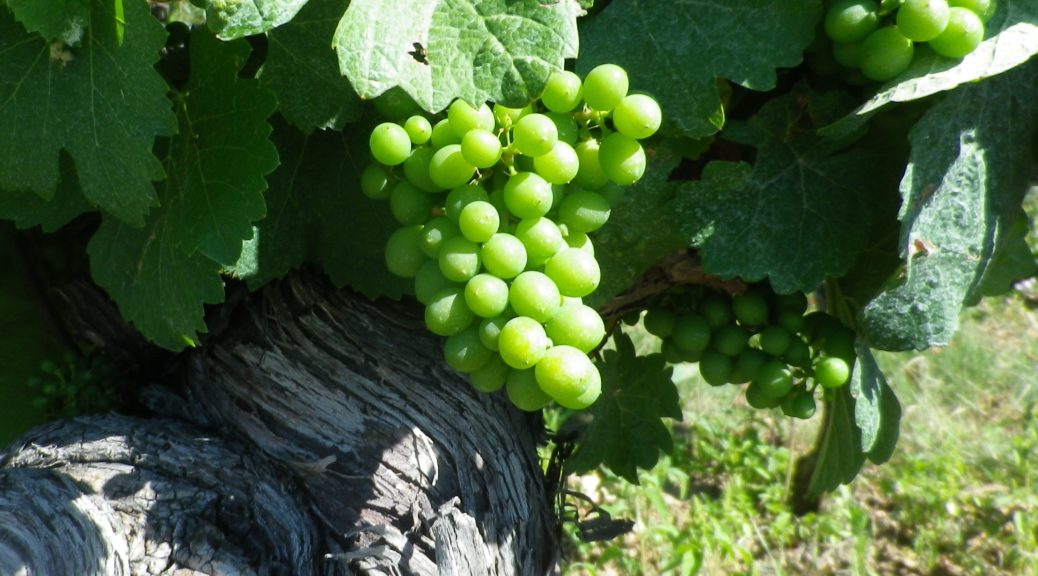Bavaria’s only wine region, Franconia, has three wine districts, the Maindreieck, the Mainviereck, and the Steigerwald. These wine growing regions are actually closer to Frankfurt am Main, than they are to Munich, the state of Bavaria’s capital. The Maindreieck, a triangle of land formed by an almost 180 degree turn in the Main River’s course, is particularly favored by nature to produce grapes. One of the major sites in terms of size is by the small town of Dettelbach, known for its consistently good wines.
Dettelbach and wine production go back a while. The soil, red sandstone overlaid by limestone deposits, dates back millions of years. However, wine production is more recent, dating to about the year 800 A.D., and linked to that of Wuerzburg, an early ecclesiastical center in this part of the world. Dettelbach’s wine production reached its zenith around the year 1600, when about 500 hectares (1235 acres) were under vine, and its nadir about 300 years later, after a succession of intervening crises beginning with the Thirty-Year War, and culminating in the phylloxera epidemic. Nowadays, about 250 hectares are under vine, and the focus is on quality and continuing improvements to the whole process, from grape to glass. Favored varietals here are Silvaner, around since the 17th century, and Bacchus, a late 20th century hybrid which includes the regional favorite, Silvaner, and Mueller-Thurgau, another white grape varietal.
Major Franconian Grape Varietals:
Silvaner: This varietal has been grown in the Franconia area since the 17th century, and is one of the more important varietals for this particular area. Many locals prefer it over Riesling.
Mueller-Thurgau: This hybrid varietal is also known as Rivaner, and produces a light, fruity wine. In Franconia, it is currently more widely planted than Silvaner.
Riesling: Riesling wine is the most planted varietal in Germany, but less so in Franconia. Here, true to form, many Riesling wines take on a mineral flavor determined by the soil.
Scheurebe: Especially famed in the Steigerwald area, wines from this varietal find particular favor and renown in this region overall.
Domina: This red wine varietal, a cross between Spaetburgunder and Portugieser, is fairly recent.
Bacchus: Crossing a Riesling with a Silvaner, with a Mueller-Thurgau, produces this grape, which can produce luscious, fruity white wines, a delight to drink chilled.
What I Tasted
2017 Bacchus, Feinherb, QbA, Weingut Glaser Himmelstoss: A semi-dry white wine with medium plus gold color, nose of peach, nutmeg, cinnamon; with floral, peach and apricot flavors; medium plus acidity.
2017 Bacchus, Dettelbacher Sonnenleite, Halbtrocken, Kabinett, Winzerhof Nagel: A dry white wine with medium gold color, apricot and floral nose, with ripe peach and mineral flavors, medium plus acidity, with a tart finish.
2017 Bacchus, Dettelbacher Honigberg, Halbtrocken, Kabinett, Weingut Apfelbacher: A semi-dry white wine with medium plus gold color, nose and flavors of ripe pear, peach, nectarine and apricot; medium plus acidity, with a smooth, velvety mouthfeel.
2017 Silvaner, Dettelbacher Honigberg, Trocken, Kabinett, Winzerhof Ruethlein: A dry white wine with medium gold color, a chalk nose, with almond and slight peach flavors; medium acidity, with a lingering, tangy finish.
2016 Bacchus, Halbtrocken, Deutsche Qualitaetswein, Weingut Apfelbacher: A semi dry white wine with medium plus gold color, nose and flavors of ripe pear, peach, nectarine and apricot; medium plus acidity, with a smooth, velvety mouthfeel.
2016 Silvaner, Ortswein Dettelbach, QbA, Weingut Glaser Himmelstoss: A dry white wine with dark minus gold color; a spicy and mineral nose, with ripe peach and apricot flavors; medium acidity.
2016 Silvaner, Trocken, Deutsche Qualitaetswein, Weingut Apfelbacher: A dry white wine with dark minus gold color, nose of pear, with pear and toasted almonds flavors; medium plus acidity, with a smooth and velvety aftertaste.
